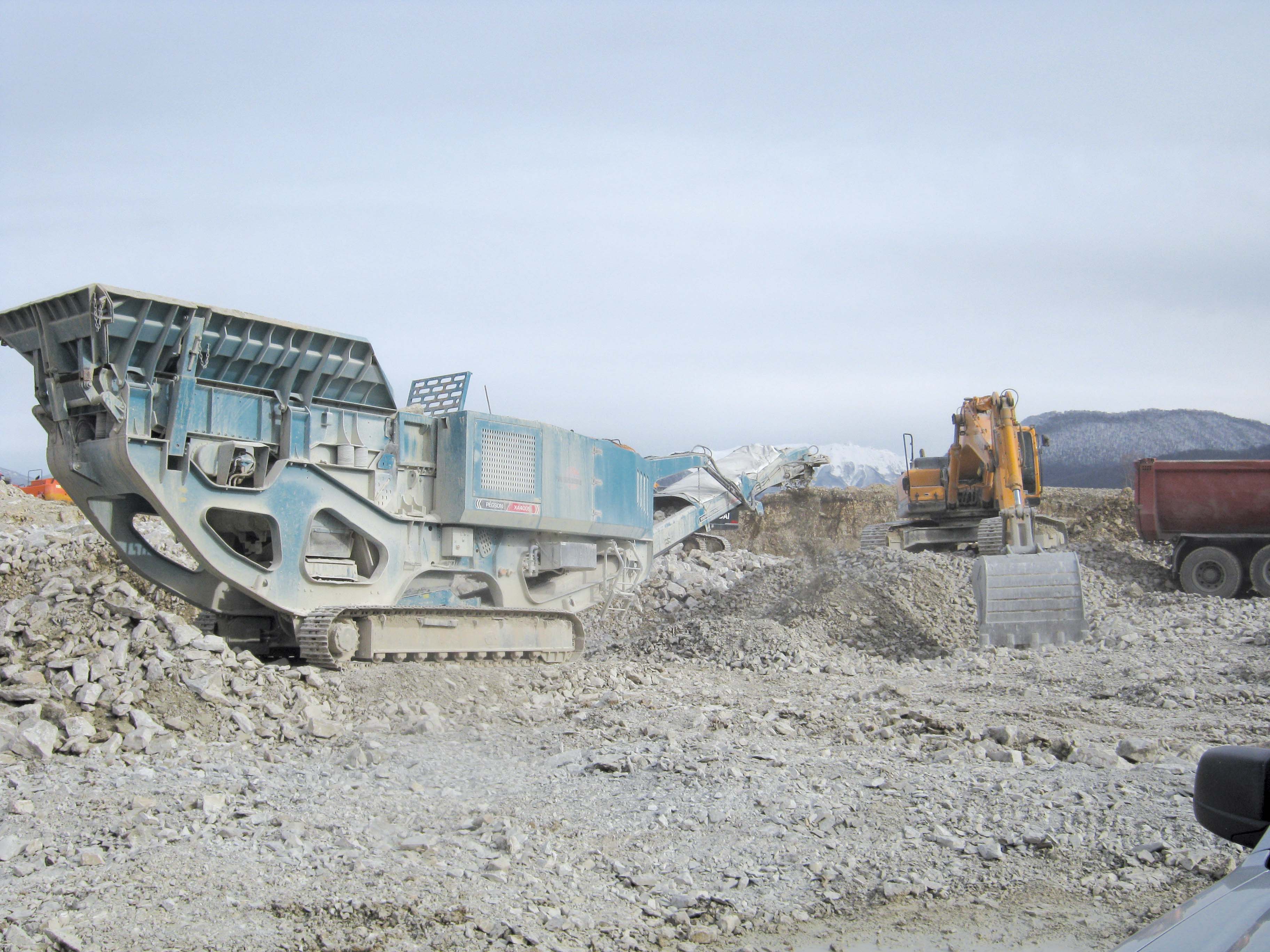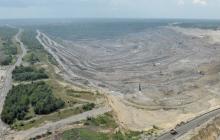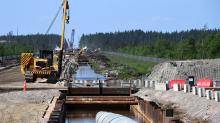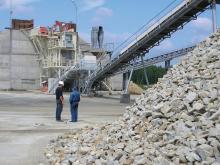
The Russian market is well known for its rapid changes with local financial markets causing volatility in the construction market.
“As in many developing markets, the young construction companies in Russia are facing challenges in their financing,” says Adrian Wood,
“During the last six months the market has been taking a breath, but the overall picture of the last 2–3 years has been very bright,” Wood explains.
The Russian construction market also has some specific characteristics that challenge the companies.
“Moscow and St Petersburg, the country’s two biggest cities, are located in an area that lacks a supply of good-quality rock material. For the construction sector this entails investments in large crushing plants and transporting rock material to big cities by rail or water. The severe climate is another factor that needs to be taken into account. Demands on the equipment are high as they need to function effectively at –30ºC,” says Lehtonen.
However, it is understood that the Russian aggregates industry is on the verge of big changes due to the plans of the Russian government to create conditions for a significant increase in production through the development of a package of measures to support the industry, which should stimulate the opening of new plants throughout the country.
Indeed, one of these plants was commissioned in Karabulak city of Ingushetia Republic and has the capacity in its concrete mixing station of 20m³/hour as well as a crushing and screening plant capable of 90m³/hour.
The plant, opened in August last year, was launched by a group of local businessmen, while the implementation of the project was personally controlled by the President of Ingushetia Yunus-Bek Yevkurov and Russia’s Minister of Industry and Trade Denis Manturov.
The implementation of this project and other similar projects will occur within the existing state strategy on the Development of Russian Industry of Construction Materials for the Period up to 2020, which involves an increase in production of aggregates up to 1.04 billion m³ by 2020.
This is significantly higher than the current volumes of production. In 2013 the consumption of aggregates in Russia reached 430 million m³ (0.8% down from 2012). The market’s value, however, reached RUB 362.30 billion (€7.42 billion), which is 4% more than in 2012. Russian factories produced 408.4 million m³ of aggregates (1% up on 2012).
The industry has almost recovered from the consequences of the global recession. Since 2009 its production volumes have increased by more than 36%, although these results are still significantly lower than the Soviet figures of 1.3 billion m³.
Crushed aggregates
In the USSR, the first mechanised quarries, which specialised in the development of sand and gravel fields, were established during the construction of the Nizhnesvirskaya Dnieper hydroelectric stations between 1930 and 1940. The boom in the Soviet aggregates industry began after the Second World War, due to the start of massive remedial works in the country after the end of the war. By this time large, fully mechanised quarry enterprises were established throughout the country and in particular in the St Petersburg region.
In terms of structure, up to 75% of the Russian aggregates market consists of crushed aggregates. The share of sand and other materials is estimated at 12% of the market each.
Major crushing and screening equipment manufacturers see Russia as an important market. For example,
As in the past, the majority of aggregates in Russia are produced in the St Petersburg region, and it is planned that the implementation of state goals, and in particular a significant increase in the total domestic production of aggregates, is expected to be achieved through the adoption of a combination of measures aimed at bringing the industry to a new level and solving its major problems.
According to an official representative of the Russian Ministry of Industry and Trade, in addition to increase in production volumes, one of the most important goals is to increase the level of profitability of the industry, which currently does not exceed 10-12%. Among the major reasons of this are high electricity tariffs and freight costs.
The uncontrolled growth of energy tariffs is the major problem of the industry.
According to Alexander Zhuravlev, president of the Russian Association of Producers and Consumers of Aggregates (Nedra), since 2010 tariffs in the industry have grown by more than 200%.
“We can’t sell our products below their cost. Their price will inevitably continue to grow, along with the growth of energy tariffs, otherwise industry enterprises will suffer huge losses and even completely stop their operations,” ,” says Zhuravlev.
According to state plans, one of the ways out of this problem is setting the limits for the growth of tariffs for the industry’s enterprises, as well as the provision of state subsidies for producers in order to cover their energy costs. However the first proposal has already caused criticism from energy suppliers, according to which, such artificial restrictions will result in huge growth of tariffs in the future.
Cost of transport
The activities of RZD, Russia’s state-run rail carrier, can be another problem in the industry. During the summertime rail tariffs in Russia grow by 30-40%, and this in turn leads to a tremendous increase in the final cost of the industry’s products.
According to analysts, the cost of transport in the case of crushed stone accounts for 50% of its final cost, while in the Case of sand it can be up to 90%.
The import of low-cost gravel is another major obstacle preventing rapid development of the industry and the Russian government was considering introducing protective duties on the imports of crushed rock at a rate of 20-40%.
Most of Russia’s leading producers of aggregates are located in the western part of the country and in particular in the St Petersburg region, while among the largest of them is the Granite Kuznechoey company, which is part of
Most of the industry’s production is currently supplied to the country’s largest cities of Moscow and St Petersburg, as well as the Siberian and the Far East regions of the country.
Russian analysts predict bright prospects for the national aggregates industry, assuming successful implementation of planned state measures and further development of the country’s road building sector.
Despite the successful completion of some major industry projects, preparations for the recent Sochi Winter Olympics 2014 and the World Cup in 2018 and other big projects have, and will continue, to drive the demand for aggregates in the country.
There is also a possibility that the volumes of the industry’s production may slightly decline in the coming years. Last year the government of the St Petersburg region declared a moratorium on the issuance of new licences for the development of new quarries in the region.
Analysts at Nedra also predict that the Russian aggregates’ market may experience a process of consolidation in the coming years as leading local players look for further development through the acquisition of smaller players. At the same time the activities of foreign players are expected to become more intense.
For example, in 2011









